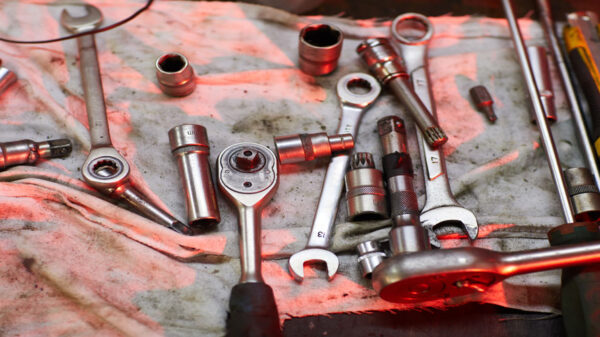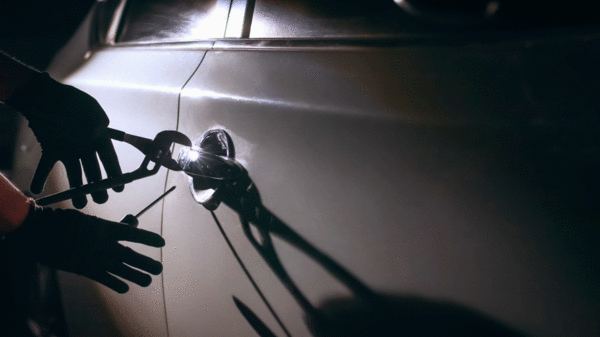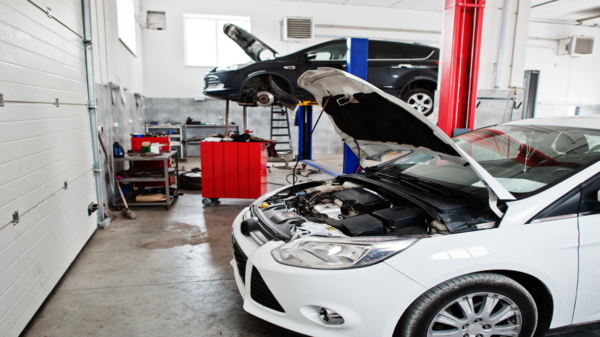Alloy Wheel Maintenance & Care
Alloy wheels can make your vehicle look better, but they require proper care to stay in good condition. If you know how to care for them, you can keep them shiny and make them last longer. This guide provides you with everything you need to know to keep your alloy wheels looking their best.
Taking care of your alloy wheels doesn’t require a lot of special tools. However, having the right tools can help you clean them faster and make the job better. Using good products is important. Choosing cleaners and protectants made for alloy wheels helps you get the best results. It also protects the surface from damage.
Choosing the Right Wheel Cleaner
Choosing the right wheel cleaner is key to making your alloy wheels shine. When you choose a wheel cleaner, pick one that is designed specifically for alloy wheels. These cleaners help remove stubborn grime, brake dust, and road dirt. They do this without damaging the finish on your wheels.
Different alloy wheel cleaners have different strengths. Some are great for regular cleaning. Others work better on tough dirt. You should think about how dirty your wheels are. Then, choose a cleaner that fits your needs.
Looking at customer reviews can help when picking an alloy wheel cleaner. Comparing different brands is important too. A well-known brand with good reviews means you will get a product that cleans your wheels well. It should also keep your wheels safe and not cause any damage.
Brushes and Applicators: What You Need
Having a good wheel cleaner is important. It’s also key to have the right brushes and tools. These help clean tight spots on your alloy wheels. Here is a simple guide to help you choose what you need:
- Wheel brush: Pick a wheel brush with soft bristles that won’t scratch. It should reach between the spokes and around the lug nuts. This brush is good for removing stubborn dirt without hurting the surface.
- Detailing brushes: For tight spots, such as around the valve stems or behind the spokes, use detailing brushes. They have smaller heads and longer bristles. This helps to clean those hard-to-reach areas better.
Using the right brushes and tools helps keep your alloy wheels clean and safe. Make sure to replace your brushes regularly. Worn-out bristles can become harsh and scratch your wheels.
Preparing Your Alloy Wheels for Cleaning
Before you take the wheel cleaner and brushes, get your alloy wheels ready. This can make cleaning easier. Just follow these few simple but important steps.
First, use a hose or a pressure washer to rinse everything well. This helps get rid of loose dirt, mud, and other things that can make the cleaner not work as well. It’s very important to rinse well after you drive on muddy roads or in places with road salt.
The Importance of Removing Loose Dirt First
Cleaning your alloy wheels is simple. Start by getting rid of loose dirt and grime. Rinse your wheels thoroughly with a hose or a pressure washer. This step really matters. It helps to remove loose dirt, mud, or debris that could scratch the surface later.
A pressure washer is great for removing hard dirt in small spaces on your wheels. When you use one, set it to low pressure and keep your distance. This will help prevent any damage to your wheels.
After rinsing, look at your wheels for leftover grime. If you find stubborn dirt, use a soft-bristled brush or a detailing brush. This will help remove it before you use the wheel cleaner.
Sectioning Your Wheel Cleaning to Avoid Damage
To keep your alloy wheels looking good, please clean them carefully. Do not try to clean all four wheels at the same time. Start with one wheel first. This way, the cleaner won’t dry out before you can rinse it off. This also helps to avoid water spots or any damage on the wheel surface.
Start with the dirtiest wheel. Spread your cleaner evenly across the entire wheel surface. Remember to clean the spokes, the barrel, and the lug nut areas too. Wait for the time suggested by the manufacturer. This waiting time allows the cleaner to break down stubborn grime and brake dust.
While the cleaner works, rinse off any loose dirt from the next wheel. Doing this step by step lets you focus on each wheel. It helps keep your wheels clean. This way, you won’t damage the quality of your alloy wheels.
The Step-by-Step Cleaning Process
Cleaning your alloy wheels is simple if you follow the right steps. Start by getting the wheels ready. Then, use your favorite wheel cleaner with the proper tools to clean them. This method will help you get the best results.
Make sure to clean one wheel at a time. This will help the cleaner not dry out and prevent water spots or damage. If you follow these steps, your alloy wheels will shine like they are new.
Applying Cleaner: Techniques for Maximum Effect
When you use an alloy wheel cleaner, make sure it suits your type of wheels. You can spray it directly on the cool and wet wheel. You can also use a wash mitt or a foam cannon. Be sure to cover every part, including the barrel, spokes, and lug nuts.
When the cleaner is on the wheel surface, it will change color. This means it is breaking down the grime. Some cleaners create foam or suds. This helps to lift the dirt away. To get the best results, let the cleaner sit for the time the manufacturer suggests.
Do not let the cleaner dry on the wheels. This can lead to streaks or water spots. If you notice the cleaner drying too fast, add more to keep the surface wet.
Agitating the Dirt: How to Scrub Properly
After the cleaner has soaked for a bit, it’s time to start scrubbing. This step is very important. It helps remove stubborn dirt from your alloy wheels. Using the right brushes is key. It helps you avoid scratches or damage.
A good idea is to use a soft wheel brush to clean the entire wheel surface. Pay special attention to areas that often gather brake dust, especially around the calipers. Use gentle, circular motions to help get rid of the dirt.
For hard-to-reach areas, like inside the wheel and behind the spokes, use a special wheel cleaning mitt or a detailing brush with a long handle. These tools make it easy to clean those spots.
Rinsing and Drying: Ensuring No Spots are Missed
Once you clean your alloy wheels, you should rinse them well. A strong stream of water from a hose or a pressure washer on a low setting will help remove any cleaner and grime. This way, your wheels will stay free of spots.
When you rinse, pay attention to the lug nut holes, spokes, and other small spots where dirt and cleaner may get stuck. Rinsing thoroughly helps avoid streaks and watermarks. This way, your wheels will stay shiny.
After rinsing, dry the wheels quickly. Use a clean microfiber towel or a special towel made for drying wheels. This helps prevent water spots from forming. Remember to dry the lug nut holes and any hidden areas too. This will make everything look even and nice.
Protecting Your Alloy Wheels
Regular cleaning helps your alloy wheels look good. A protective layer can make them last longer and shine brighter. This protection comes from using sealants or wax that is made for alloy wheels.
These protective layers make the wheels shiny. They also form a shield against brake dust and grime. This helps to clean the wheels more easily later.
Applying Sealant for Long-Term Protection
A special sealant for alloy wheels protects them from dirt, grime, and corrosion over time. Picking a good sealant is a wise decision. It helps your wheels stay looking new for a longer period.
Before you use the sealant, check that your wheels are clean and dry. Use an applicator pad or a microfiber cloth to spread the sealant evenly on the wheel surface. Follow the instructions from the manufacturer. Allow the sealant to dry as directed before exposing the wheels to water.
Using a sealant several times a year forms a strong barrier. This helps you clean your wheels more easily later on. It also protects your investment in your alloy wheels.
When to Use Wax on Your Alloy Wheels
A sealant provides strong and lasting protection. When you add wax on top, it improves the finish of your alloy wheels and gives more protection. Wax creates a smooth surface that helps keep water and dirt away. This makes it harder for dirt to stick.
Wax does not last as long as sealant. You will need to use it more regularly. Try to find a good carnauba wax or a synthetic wax that is made for wheels.
When you put on the wax, be careful and use a soft foam pad. Move the pad in circles. Wait for the wax to dry until it looks cloudy. Then, take a clean microfiber cloth and buff it off. This will make your alloy wheels shine like they are new.
Common Mistakes to Avoid in Alloy Wheel Care
Cleaning alloy wheels seems simple, but car owners often make mistakes that can damage them and lessen their shine. Understanding these mistakes can help you avoid them.
People often use the wrong products. They may miss some spots or forget safety steps while cleaning. If you avoid these problems, you can keep your alloy wheels looking great.
Using Harsh Chemicals: What to Watch Out For
One common mistake people make when caring for alloy wheels is using harsh chemicals. These chemicals can damage the finish of your wheels. It is best to avoid strong household cleaners, oven cleaners, and acidic products not made for alloy wheels. These can take away the protective coating on your wheels. This might lead to discoloration, corrosion, or even etching.
Always pick pH-neutral cleaners that are made for alloy wheels. These cleaners work well to remove brake dust and road grime. They will not harm the finish of your wheels. If you are not sure which products to use, check your car’s manual. You can also ask the wheel manufacturer for help.
Using the right cleaning products is really important to keep your alloy wheels looking good for a long time. Harsh chemicals may feel like an easy fix, but they can cause serious harm. This damage could end up costing you a lot to repair.
Overlooking Wheel Wells and Back of the Wheel
When you clean your alloy wheels, it’s easy to forget about the wheel wells and the back of the wheel. These spots can build up a lot of road grime, brake dust, and dirt. This can make your wheels look less clean overall.
|
Area |
Why it’s important to clean this area |
|
Wheel wells |
Cleaning them prevents dirt and grime from splashing back onto your freshly cleaned wheels. |
|
Back of wheel |
Cleaning this area ensures a thorough clean, as grime tends to build upon the back of the wheels, especially during wet driving conditions. |
Use a hose or a pressure washer to wash away any loose debris. For tougher grime, try a long-handled brush and a special wheel well cleaner.
Caring for your Alloy Wheels
Taking care of your alloy wheels improves your vehicle’s appearance and helps them last longer. You can keep your wheels shiny and new by following the steps in this guide. Remember to use the right cleaning products and follow a simple cleaning process. It’s also good to protect your alloy wheels with sealants or wax. Avoid common mistakes, like using strong chemicals or missing spots when cleaning. Regular maintenance is key to keeping your alloy wheels in good shape. For more tips and answers to common questions, check out the rest of this detailed guide.
Frequently Asked Questions
How Often Should I Clean My Alloy Wheels?
The cleanliness of alloy wheels can change based on your driving habits and the conditions they face. It’s best to clean them every two weeks to keep them in good condition. If you usually drive on dirt roads or in rough weather, you might need to clean them more often to keep them in top condition.
Can Household Cleaners Be Used on Alloy Wheels?
It is better not to use normal household cleaners on alloy wheels. These cleaners can be too harsh. Instead, you should use a special alloy wheel cleaner. This cleaner is made to remove brake dust and road grime. It cleans well without causing corrosion or leaving residue. This is important because residue can damage the finish of your wheels or bodywork.
Key Highlights
- Cleaning your alloy wheels regularly is important. It keeps them shiny and prevents damage from brake dust, road grime, and salt.
- Choosing the right wheel cleaner, brushes, and protectants will help you clean without harming the wheel’s surface.
- Preparing well is also key. This includes cleaning in a shady area and removing loose dirt first for the best results.
- A step-by-step cleaning method is important. You should apply the cleaner, scrub off the grime, and rinse and dry your wheels properly.
- There are some common mistakes to avoid. These include using harsh chemicals, not cleaning the wheel wells, and forgetting to protect your wheels with sealant or wax.






















